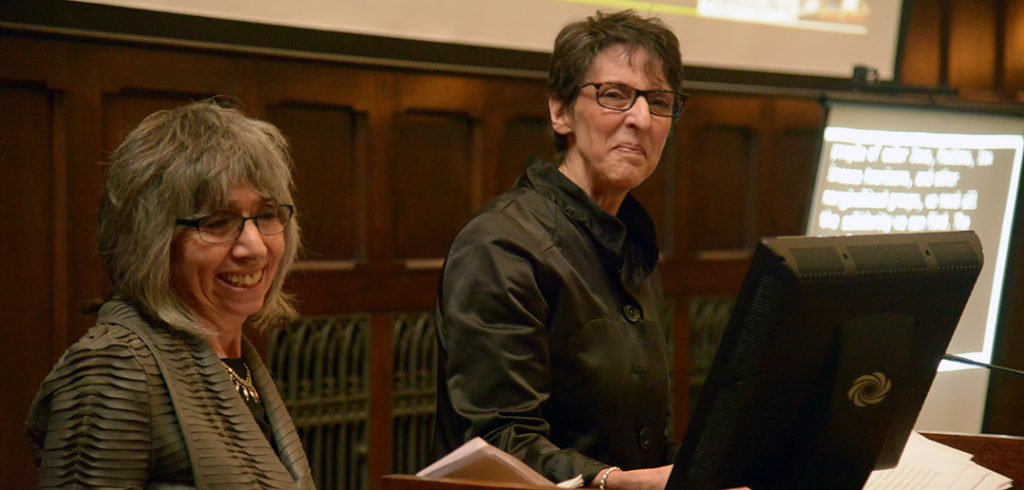Unfortunately, the numbers don’t necessarily affect elections in the way one might expect, said Faye Ginsburg, Ph.D. and Rayna Rapp, Ph.D., professors of anthropology at New York University and founders of the Council for the Study of Disability. The two took turns reading from prepared remarks, while a transcript of the lecture flashed across a screen, and an interpreter provided a translations in American Sign Language.
The researchers made their remarks at the Fordham Distinguished Lecture on Disabilities, delivered on April 27 at the Rose Hill campus. The lecture, “Disability Publics: Toward a History of Possible Futures,” examined how the presence of disabilities is dramatically increasing and transforming national consciousness. It was initially thought that growing numbers might wake a “sleeping giant,” during the 2016 presidential campaign.
“Given the stark contrast between the Clinton and Trump campaigns around disability issues, we nonetheless assumed . . . that the disability vote would indeed rally for Clinton, whose policy recommendations addressed areas of key importance to this constituency,” they said.
The speakers said they had been optimistic because of the increased visibility of the community through social media, including a campaign called “#cripthevote” which rallied the disability vote.
Candidate Trump’s mocking of New York Times reporter Serge Kovaleski, who has arthrogryposis, seemed to shore up the disabilities vote for Clinton, they said. And the Clinton campaign capitalized on the gaffe by running an ad in which a teen age cancer survivor with a limp watches footage from the rally and tells viewers: “I don’t want a president who makes fun of me, I want a president who inspires me.”
A month later disability activist Anastasia Somoza was a featured speaker at the Democratic National Convention. Ginsburg and Rapp said the infrastructure of the convention was notable for its attention to accessibility.
“For a brief moment, it seemed as if political arithmetic might work to alter the electoral process,” they said.
However, the two said they were stunned when Trump won the electoral vote. “We had to revisit our overly optimistic assumptions about a unified disability constituency and scrutinize what actually happened.”
It turned out that the disability vote was split along party lines, as it had always been—despite Trump’s egregious behavior, they said.
The speakers said they’re profoundly concerned about enforcement of the Americans with Disabilities Act, particularly after Secretary of Education Betsy deVos’s confirmation hearing revealed a lack of knowledge of the legal entitlements to special education.
While Attorney General Jeff Sessions is more knowledgeable, they said, he has shown “contempt” for the legal guarantees for free and appropriate public education of American children with disabilities. They said it’s time to make the political platforms on disability rights more transparent, so that the entire voting block understands what’s at stake.
“Clearly, we cannot take longstanding federal legislation for granted; the ADA is under threat as is the very recognition of the personhood of those with disabilities,” they said. “As scholars and activists, we need to understand what happened, as we collectively imagine how we might move forward.”

